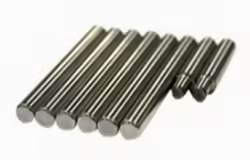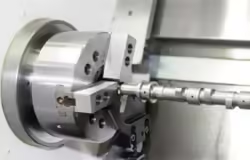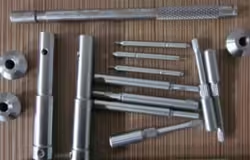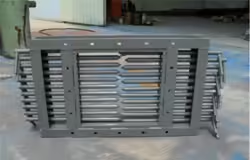
4140 vs 4130 Steel: Which One is More Cost-Effective?
Table of Contents
Introduction
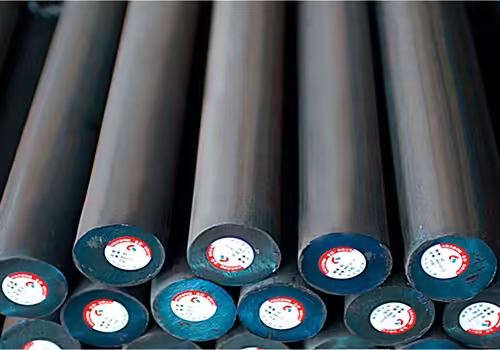
Choosing the right steel for your manufacturing or engineering project is critical, especially when balancing performance and cost. Two of the most commonly compared materials are 4140 and 4130 steel. Both are low alloy steels with chromium and molybdenum as their primary strengthening elements. But when it comes to cost-effectiveness, which one should you choose?
In China’s high-quality steel manufacturing sector, Henan Jiyuan Iron & Steel (Group) Co., Ltd. has built a trusted reputation. Established in 1958, the company is a national high-tech enterprise and one of the Top 500 Chinese Enterprises. Located in Jiyuan City, Henan Province, the company operates with advanced production technology and has an annual capacity of 5 million tons of steel. Its product line includes alloy steel grades like 4130 and 4140, serving industries that demand performance, reliability, and cost-efficiency.
This article will compare 4140 vs 4130 steel in terms of chemical composition, mechanical properties, applications, and overall cost-effectiveness to help you make an informed decision.
Chemical Composition: A Side-by-Side View
When evaluating 4140 vs 4130 steel, one of the most fundamental starting points is their chemical composition. While both steels belong to the chromium-molybdenum (Cr-Mo) low alloy steel family, the slight variations in their elemental makeup—particularly carbon content—can result in significantly different physical properties, manufacturing behaviors, and cost-performance outcomes. Understanding the chemical composition is crucial when deciding between 4140 vs 4130 steel, as the material choice will impact not only the performance but also the overall cost-effectiveness of your project.
Both 4140 steel and 4130 steel share primary elements such as chromium, molybdenum, manganese, and silicon. However, the key distinction lies in the carbon content, which has a direct impact on strength, hardness, and heat treatment response. These differences make the two alloys suitable for different applications based on the specific requirements of strength, flexibility, and cost-efficiency.
Here’s a comparative breakdown of the chemical composition of 4140 vs 4130 steel:
| Element | 4130 Steel (%) | 4140 Steel (%) |
|---|---|---|
| Carbon (C) | 0.28–0.33 | 0.38–0.43 |
| Manganese (Mn) | 0.40–0.60 | 0.75–1.00 |
| Chromium (Cr) | 0.80–1.10 | 0.80–1.10 |
| Molybdenum (Mo) | 0.15–0.25 | 0.15–0.25 |
| Silicon (Si) | 0.15–0.35 | 0.15–0.30 |
| Sulfur (S) | ≤0.035 | ≤0.035 |
| Phosphorus (P) | ≤0.035 | ≤0.035 |
As seen in the table, the main difference between 4140 vs 4130 steel lies in the carbon content. 4140 steel contains higher levels of carbon, making it harder, stronger, and more resistant to wear and fatigue. The higher carbon content allows 4140 steel to achieve superior tensile strength and hardness, which is essential for parts that experience significant stress and strain, such as shafts, gears, and tool components.
On the other hand, 4130 steel, with its lower carbon content, tends to be more ductile and malleable. This makes it an excellent choice for applications that require high weldability and ease of fabrication. Its slightly lower tensile strength, however, means it may not perform as well under high-stress conditions compared to 4140 steel.
、When considering 4140 vs 4130 steel for your application, it’s essential to match the steel’s properties to your specific needs. The decision will depend on factors like strength, weldability, machinability, and overall cost-effectiveness. Manufacturers like Henan Jiyuan Iron & Steel (Group) Co., Ltd., which offer both 4130 and 4140 steel, can provide you with the appropriate material that meets the precise demands of your project.
Mechanical Properties Comparison

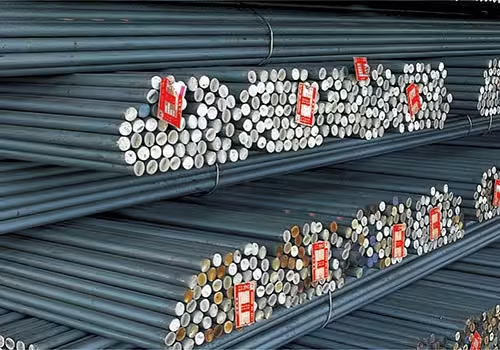
Mechanical properties are a crucial factor when selecting the appropriate material for any given application. Here’s a comparison of key metrics such as tensile strength, yield strength, elongation, hardness, weldability, and machinability for 4140 vs 4130 steel:
| Property | 4140 Steel | 4130 Steel |
|---|---|---|
| Carbon Content (%) | 0.38–0.43 | 0.28–0.33 |
| Tensile Strength (MPa) | 655–1790 | 560–980 |
| Yield Strength (MPa) | 415–1515 | 435–560 |
| Elongation (%) | 20–25 | 25–30 |
| Hardness (HB) | 197–300 | 149–207 |
| Weldability | Moderate to Good | Excellent |
| Machinability | Moderate | Good |
As seen above, 4140 steel has a higher tensile strength and hardness compared to 4130 steel. These properties make 4140 steel more suitable for heavy-duty applications where parts need to withstand high stress and wear, such as gears, shafts, and heavy machinery components. The higher tensile strength of 4140 also gives it an edge in terms of fatigue resistance, making it ideal for applications that demand long-term durability under cyclical loading.
In contrast, 4130 steel offers better elongation and weldability. It’s more flexible and less likely to crack under deformation, making it suitable for applications that require better formability and ease of welding, such as frame tubing, roll cages, and structural components. The improved weldability of 4130 steel also makes it easier to work with, which is beneficial for fabrication and assembly processes.
Performance in Different Applications
Automotive and Aerospace
Both 4140 vs 4130 steel are commonly used in automotive and aerospace industries, but the choice between them largely depends on the specific requirements of the components being produced. The higher strength and wear resistance of 4140 steel make it a preferred choice for components such as crankshafts, axles, and transmission parts, where durability and performance under high loads are essential.
4130 steel, being lighter and more malleable, is often selected for structural components such as aircraft frames, roll cages, and automotive tubing. The reduced weight and better weldability make 4130 steel ideal for applications that require the creation of intricate designs or structures while maintaining a balance of strength and flexibility. When choosing between 4140 vs 4130 steel for these industries, considerations like weight, strength, and weldability often come into play, with 4130 steel excelling in lightweight and highly flexible applications.
Industrial Machinery
In heavy-duty industrial machinery applications, 4140 steel is typically favored for parts that need to withstand significant wear and tear, such as gears, shafts, and hydraulic components. Its superior hardness, fatigue resistance, and overall strength make 4140 steel the go-to material for components exposed to harsh operating conditions. When comparing 4140 vs 4130 steel, the enhanced toughness of 4140 steel gives it a significant advantage in applications requiring high strength and resistance to wear.
On the other hand, 4130 steel’s lower strength and better formability make it a great choice for applications that require complex shapes and precise welding, such as tubing, frames, and structural components used in lighter machinery and equipment. For machinery that prioritizes ease of fabrication and weldability, 4130 steel is often the preferred option.
Henan Jiyuan Iron & Steel (Group) Co., Ltd. plays a significant role in supplying both 4140 vs 4130 steel alloy steels to these industries. The company’s extensive range of testing and production certifications, including ISO9001 and IATF16949, ensures that each batch of steel meets the highest mechanical performance standards, whether the application is in aerospace, automotive, or industrial machinery.
Cost Considerations
Raw Material Cost
One of the most notable differences when comparing 4140 vs 4130 steel is their cost. 4130 steel, with its lower carbon and alloy content, tends to be less expensive per unit weight than 4140 steel. This makes it an attractive option for applications where cost is a primary concern, but performance requirements are not as demanding.
Fabrication and Processing
The superior weldability and machinability of 4130 steel can result in lower overall fabrication costs. This is especially advantageous for large-scale manufacturing projects or complex components where precise welding and shaping are necessary.
Long-Term Performance
Although 4140 steel may come with a higher initial cost, its enhanced durability, strength, and wear resistance can lead to lower maintenance costs and a longer service life. For applications that demand high performance and reliability, 4140 steel offers better value over time, as its long-term benefits often outweigh the initial price difference.
Availability and Sourcing
Henan Jiyuan Iron & Steel (Group) Co., Ltd. offers both 4140 and 4130 steel in a wide range of grades, ensuring easy access for customers worldwide. With a well-established logistics network and a dedicated railway line, the company can efficiently fulfill orders, supporting both domestic and international clients with timely deliveries. Additionally, with over 8,000 employees and a strong technical team, Henan Jiyuan Iron & Steel ensures high-quality production and reliable support for its clients throughout the procurement process.
Environmental and Certification Standards

Henan Jiyuan Iron & Steel (Group) Co., Ltd. has earned numerous certifications, reflecting its commitment to environmental sustainability and quality assurance. These include ISO14001, GB/T28001, and China Classification Society factory approval, among others. The company’s focus on green manufacturing and intelligent production processes demonstrates its dedication to minimizing its environmental footprint while maintaining the highest standards of steel production.
Conclusion
When comparing 4140 vs 4130 steel, the best choice depends on your project’s needs, with 4140 offering high strength and wear resistance, and 4130 providing flexibility, weldability, and cost savings, all backed by Henan Jiyuan Iron & Steel (Group) Co., Ltd.‘s reliable quality and global supply capabilities.
FAQ
What is the main difference between 4140 vs 4130 steel?
The primary difference between 4140 vs 4130 steel is carbon content. 4140 steel contains more carbon, which contributes to its higher strength and hardness compared to 4130 steel.
Which is more cost-effective: 4140 or 4130?
4130 steel is generally more cost-effective upfront due to lower material and fabrication costs. However, when comparing 4140 vs 4130 steel in terms of long-term value, 4140 may offer better durability, which could justify the higher initial cost.
Can 4130 and 4140 steel be welded easily?
4130 steel has excellent weldability. 4140 can be welded but requires more care to avoid cracking.
Are both steels available from Henan Jiyuan Iron & Steel?
Yes, both 4130 and 4140 steel are part of the company’s high-quality alloy steel product line.
Does Henan Jiyuan Iron & Steel ship internationally?
Yes, Henan Jiyuan Iron & Steel has robust logistics and railway infrastructure to support both domestic and international delivery of 4140 vs 4130 steel to meet global demands.

